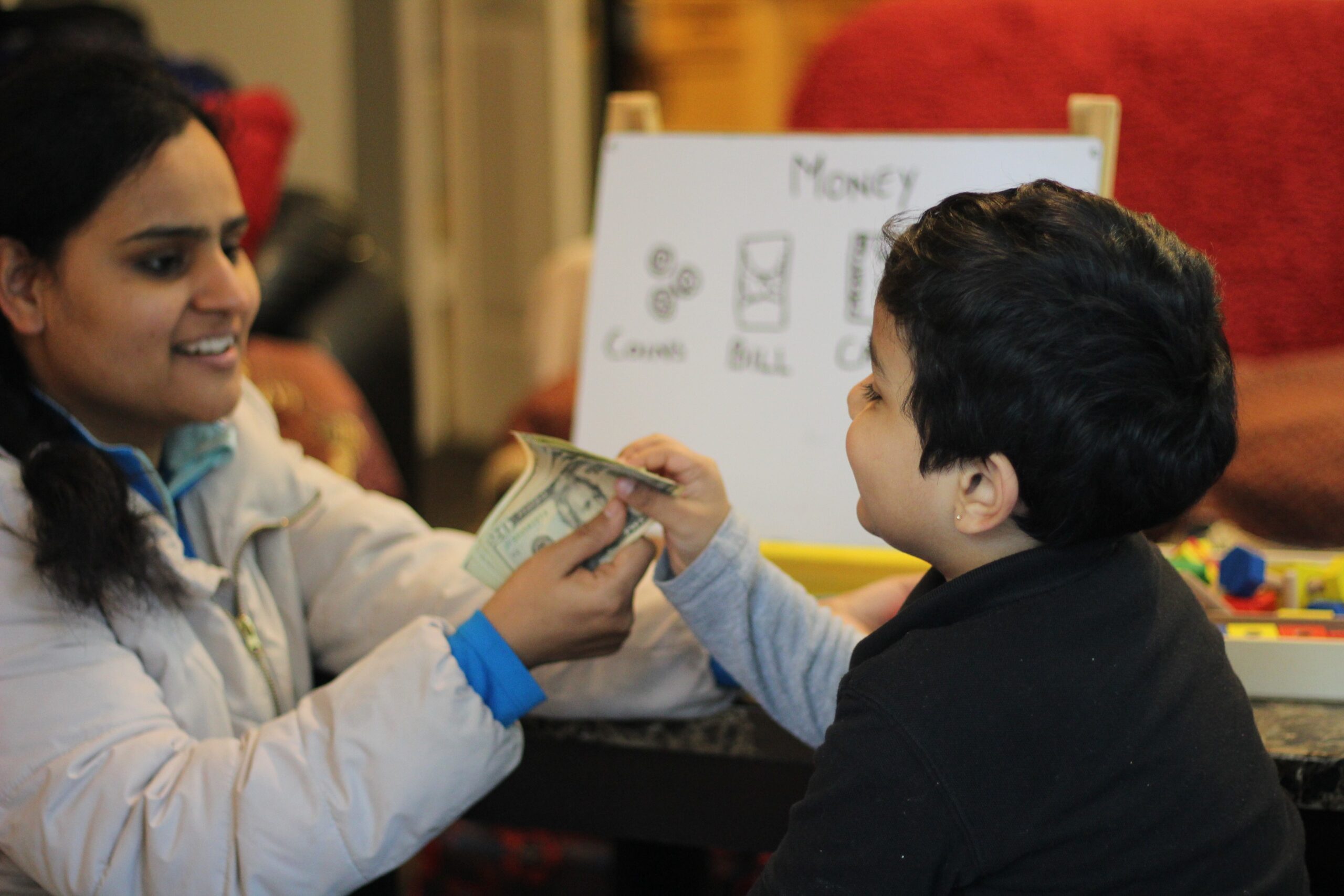Teaching kids money management skills early creates a foundation for lifelong financial success. Many parents struggle with how to approach this critical education, often delaying these conversations until children are older.
Children without proper money habits frequently become adults who overspend, fail to save, or make poor financial decisions. They end up drowning in debt or living paycheck to paycheck, lacking the essential skills needed for financial stability.
Fortunately, teaching money management requires no complex knowledge or expensive tools. Simple, age-appropriate activities can transform abstract concepts into concrete learning experiences.
15 Ways to Teach Kids About Money Management: Age-Based Guide 2025

15 Ways to Teach Kids About Money Management
Early Foundation (Ages 3-7)
1. Start with Physical Money Recognition

Introduce coins and bills through hands-on play. Let children sort pennies, nickels, dimes, and quarters while learning their values. Use real money for counting games and simple math exercises. This builds foundational number skills while familiarizing them with currency.
2. Create a Clear Jar Savings System

Give young children a transparent jar for saving money so they can visually see their savings grow. This immediate visual feedback is more meaningful than abstract bank account numbers. Let them add coins regularly and celebrate milestones when the jar reaches certain levels.
3. Practice Store Role-Play

Set up a pretend store at home where children can “buy” toys or snacks using play money or real coins. Take turns being the cashier and customer. This teaches basic transaction concepts, counting change, and the exchange of money for goods.
Building Concepts (Ages 8-12)
4. Implement the Three-Jar System

Introduce spending, saving, and giving jars to teach money allocation. When children receive money, help them divide it among the three categories. This builds the habit of thoughtful money distribution and introduces the concept of charitable giving alongside personal financial goals.
5. Start a Family Budget Discussion

Include age-appropriate children in simplified family budget conversations. Explain how money comes in through work and goes out for necessities like food, housing, and transportation. This helps them understand that money is finite and requires planning.
6. Introduce Earning Through Chores

Create an age-appropriate chore system where children can earn money for tasks beyond their regular responsibilities. This teaches the connection between work and income while building a strong work ethic. Be clear about which chores are expected family contributions and which earn payment.
7. Open Their First Bank Account

Visit a bank together to open a savings account in your child’s name. Let them make deposits and watch their balance grow with interest. Many banks offer special youth accounts with educational materials and online tools designed for young savers.
Developing Skills (Ages 13-16)
8. Teach Comparison Shopping

When shopping together, show children how to compare prices, look for sales, and evaluate value. Teach them to calculate unit prices and consider quality versus cost. Let them research purchases online and in stores to find the best deals.
9. Create Saving Goals with Timelines

Help children set specific saving goals for items they want, whether it’s a video game, bike, or clothing. Calculate how much they need to save weekly or monthly to reach their goal by a target date. This teaches delayed gratification and goal-setting skills.
10. Introduce Basic Banking Concepts

Explain how checking and savings accounts work, what interest means, and how ATMs function. Discuss the difference between debit and credit cards, and why it’s important to keep track of spending. Consider letting them manage a small checking account with supervision.
11. Discuss Wants vs. Needs

Regularly engage in conversations about distinguishing between wants and needs. When they ask for purchases, help them categorize the item and decide if it’s worth spending money on. This critical thinking skill is fundamental to good financial decision-making.
Advanced Preparation (Ages 17+)
12. Teach About Credit and Debt

Explain how credit cards work, including interest rates, minimum payments, and how debt can accumulate. Discuss credit scores and their importance for future purchases like cars and homes. Consider making them an authorized user on your credit card to help them build credit history responsibly.
13. Introduce Investment Basics

Explain simple investment concepts like stocks, bonds, and mutual funds. Consider opening a custodial investment account where they can invest small amounts and watch their money potentially grow over time. Discuss the relationship between risk and reward in investing.
14. Practice Real-World Budgeting

Have older teens create and manage a monthly budget that includes income from part-time jobs and expenses like gas, entertainment, and savings. Review their spending regularly and help them adjust their budget as needed. This prepares them for independent financial management.
15. Model Good Financial Behavior

Children learn more from what they observe than what they’re told. Demonstrate good financial habits like comparing prices, saving for purchases, avoiding impulse buying, and discussing financial decisions with your partner. Share age-appropriate stories about your own financial successes and mistakes.
Key Principles for Success
Start Early: Financial habits formed in childhood often carry into adulthood. Begin with simple concepts as soon as children show interest in money.
Make it Practical: Use real-life situations and hands-on experiences rather than abstract lessons. Shopping trips, saving for specific goals, and earning money through work are more effective than theoretical discussions.
Be Patient and Consistent: Financial literacy develops over time. Repeat concepts in different contexts and be prepared to answer the same questions multiple times as children grow and their understanding deepens.
Encourage Questions: Create an environment where children feel comfortable asking about money. Their questions often reveal important learning opportunities and help you understand their current level of comprehension.
Celebrate Progress: Acknowledge when children make good financial decisions, reach savings goals, or demonstrate improved money management skills. Positive reinforcement builds confidence and encourages continued learning.
Essential Digital Tools and Apps for 2025
Greenlight ($5.99-$9.98/month) offers the most features including debit cards, investing, and comprehensive parental controls. It’s expensive but works well for teens ready for advanced money management.
BusyKid ($4/month) focuses on chores and charity giving. Kids can donate to real charities and invest small amounts. Good for families emphasizing work ethic over banking features.
iAllowance (Free-$2.99) provides basic chore tracking without banking. It’s simple and cheap but kids outgrow it quickly. Works for elementary ages starting out.
FamZoo ($2.50-$5.50/month) emphasizes family budgeting with detailed spending reports. Parents get maximum control but the interface feels outdated compared to newer apps.
Choose based on your child’s age and your priorities. Elementary kids need simple apps. Teens benefit from investing features. Consider total annual costs and security features before deciding.


